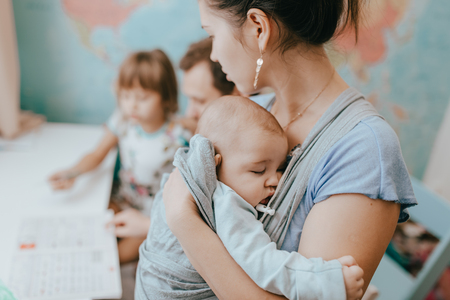Introduction: The Significance of Support Networks in UK Birthing Settings
When it comes to childbirth in the UK, having a robust support network is not just a comfort—it’s an essential part of the experience for many expectant mothers. The presence of partners and family members during labour and birth has long been recognised as beneficial, contributing positively to both emotional well-being and clinical outcomes. Across the UK, the involvement of loved ones is shaped by unique cultural expectations and reinforced by evolving healthcare policies that aim to put women’s needs at the heart of maternity care. From NHS guidelines encouraging partner participation to local hospital practices welcoming birthing partners, these support networks play a crucial role in reducing anxiety, boosting confidence, and fostering a sense of security throughout the birthing journey. In British society, there is a growing appreciation for inclusive and compassionate care that honours each family’s preferences—whether that means having a partner by your side, involving extended family, or choosing a more private experience. Understanding why partner and family involvement matters helps highlight the importance of nurturing strong, supportive connections during one of life’s most transformative moments.
Roles of Partners: Emotional and Practical Support
In the UK, partners play a crucial role in supporting women through childbirth, whether the birth takes place in a hospital, at home, or in a birth centre. Their involvement not only strengthens the emotional bond between the couple but also enhances the overall birthing experience by providing both emotional reassurance and practical assistance. The ways in which partners contribute can vary depending on the chosen setting.
Hospital Births
Within NHS hospital settings, partners are generally encouraged to be present during labour and delivery. Their main responsibilities often include:
- Emotional support: Offering comfort, encouragement, and reassurance during contractions and medical procedures.
- Advocacy: Communicating preferences and concerns to healthcare professionals on behalf of the birthing person.
- Practical help: Assisting with breathing techniques, massages, and keeping their partner hydrated or comfortable.
Home Births
Home births offer a more intimate environment where partners may take on broader roles:
- Setting up the space: Preparing a calm, safe environment with soft lighting, music, or aromatherapy.
- Supporting midwives: Working closely with community midwives, ensuring they have what they need.
- Providing direct care: Helping their partner move about freely or access comfort measures such as water births or birthing balls.
Birth Centre Experiences
Birth centres across the UK typically foster a family-centred approach that values active partner participation. Here, partners often:
- Create a relaxing atmosphere: Personalising the birthing room with familiar items from home.
- Participate in decision-making: Engaging in conversations about pain relief options or birthing positions alongside midwives.
- Offer continuous presence: Remaining by their partner’s side throughout the process for consistent support.
A Comparison of Partner Roles Across Settings
| Hospital | Home Birth | Birth Centre | |
|---|---|---|---|
| Emotional Support | High | Very High | Very High |
| Practical Assistance | Moderate (within clinical limits) | Extensive (includes preparing environment) | High (personalising space) |
| Advocacy/Decision-Making | Mainly advocacy with staff | Shared decisions with midwife involvement | Collaborative approach with midwives |
| Permanence of Presence | Might be limited during certain procedures | No restrictions unless requested otherwise | No restrictions; encouraged throughout labour |
The unique support offered by partners in each setting reflects both NHS guidelines and cultural expectations within the UK. No matter the location, their presence is consistently valued as a source of strength and reassurance for birthing women. This collaborative approach is increasingly recognised as beneficial for both physical outcomes and emotional wellbeing during childbirth.

3. Family Support: Beyond the Partner
In the UK, family support during childbirth is not limited to just the birthing partner. The involvement of other family members—such as parents, siblings, or close friends—can play a significant role in providing emotional comfort and practical assistance for the expectant mother. However, the degree to which wider family members can participate varies widely depending on the birthing setting, local NHS Trust policies, and personal preferences.
Hospital Births: Policy-Driven Involvement
Most NHS hospitals across the UK have clear guidelines about who can be present during labour and delivery. Typically, only one or two birth partners are allowed in the room, especially in busy urban hospitals. This policy aims to ensure privacy and maintain a calm environment for both staff and patients. While this often means that extended family members may wait outside the delivery suite, some hospitals offer more flexible visiting hours after birth, allowing grandparents or siblings to meet the new arrival soon after delivery.
Home Births: A More Inclusive Approach
Home births tend to offer greater flexibility regarding who can be present during labour. Many families find comfort in having several loved ones nearby, whether it’s a supportive parent, a best friend, or even older children (if deemed appropriate). In these settings, midwives will still prioritise safety and respect the wishes of the birthing person when it comes to who is in attendance. Home environments can feel less clinical and allow families to tailor their support network according to their own values and traditions.
Cultural Considerations and Personal Choice
The UK’s diverse population means family involvement during birth is influenced by cultural backgrounds as well as individual beliefs. For some families, having multiple generations present is deeply important; for others, privacy and intimacy with only a partner are preferred. It is always encouraged that expectant mothers discuss their wishes with their maternity team early on so plans can be made that respect both hospital guidelines and personal needs.
Navigating Expectations and Communication
Ultimately, effective communication between families and healthcare providers is key. Whether you’re planning a hospital or home birth, understanding local policies ahead of time helps manage expectations and ensures everyone feels included where possible. The right balance of support—whether from a partner alone or an extended family network—can make all the difference in creating a positive birthing experience within the unique context of UK maternity care.
Cultural Influences and Diverse Family Structures
Within the UK, childbirth is experienced in a context rich with cultural diversity and evolving family dynamics. The way support is provided during labour and birth can be strongly shaped by cultural background, beliefs, and differing definitions of “family.” Recognising and respecting these differences is vital for creating an inclusive birthing environment.
Cultural Background and Beliefs
Cultural heritage often determines expectations around birth, including who should be present and how partners or relatives participate. For instance, some South Asian families may prefer the involvement of older female relatives over male partners, while other communities might view childbirth as a private experience involving only the mother. Midwives in the UK are trained to honour these preferences where possible, balancing cultural sensitivity with NHS guidelines.
Diverse Family Dynamics
Modern British families are not limited to traditional structures. Single parents, same-sex couples, blended families, and chosen support networks all play a role in today’s birthing settings. Healthcare providers strive to accommodate these dynamics by supporting the birthing person’s choices regarding companions during labour, whether it’s a partner, parent, friend, or doula.
Examples of Support Dynamics Across Cultures and Family Structures
| Family Structure/Cultural Group | Typical Birth Support Preferences |
|---|---|
| South Asian Families | Mother-in-law or elder female relative often preferred as main support |
| Same-Sex Couples | Partner actively involved; both parents encouraged to participate equally |
| Single Parents | Chosen friend or family member present for emotional support |
| African-Caribbean Families | Extended family involvement valued; flexibility around who attends |
Healthcare Considerations
NHS trusts promote inclusivity by allowing birthing people to nominate their own supporters, regardless of biological ties or traditional roles. Interpreters are available for non-English speakers to ensure everyone feels informed and empowered during childbirth. By embracing the breadth of family structures and respecting cultural beliefs, UK maternity care aims to provide positive, personalised experiences for all families.
5. Healthcare Professional Perspectives on Support People
Within the NHS, the presence of partners and family members during labour and delivery is widely acknowledged as beneficial for the emotional wellbeing of birthing women. NHS guidelines encourage the involvement of a chosen birth partner, typically recommending that women have the right to be accompanied by at least one support person throughout labour and birth. This approach reflects an understanding that emotional reassurance can positively impact the birthing experience, helping to reduce anxiety and facilitate smoother communication with medical staff.
However, the practical application of these guidelines often depends on individual hospital policies, staffing levels, and the specific needs of each case. Some healthcare professionals highlight that during busy periods or in certain clinical scenarios—such as emergency interventions or during a pandemic—restrictions may be placed on the number or type of support people allowed. These limitations are not intended to diminish family involvement but rather to maintain safety, privacy, and infection control within birthing units.
NHS midwives and obstetricians generally advocate for collaborative decision-making between staff, mothers, and their support networks. They recognise that partners play a vital role in advocacy and emotional support. Staff attitudes towards family involvement are shaped by professional training, cultural sensitivity, and personal experiences. Many strive to create a welcoming environment for partners and families, offering guidance on how best to participate without interfering with medical procedures or patient care.
Communication is key: healthcare teams encourage open dialogue with families about expectations, roles, and boundaries during labour. Information leaflets and antenatal classes provided by hospitals often include advice for partners on supporting effectively while respecting the needs of both mother and staff. Ultimately, NHS professionals aim to strike a balance between providing compassionate care and maintaining clinical efficiency, ensuring that all parties feel respected and empowered throughout the birthing process.
6. Challenges and Considerations for Support in Different Settings
When it comes to partner and family involvement during birth in the UK, several challenges and considerations can influence who is present and how support is provided. The unique mix of practical, emotional, and logistical factors across various birthing settings—such as NHS hospitals, midwife-led units, and home births—shapes each familys experience.
Practical Constraints
Space and resources often dictate support arrangements in NHS hospitals and birth centres. Many hospital wards have strict policies on the number of birth partners allowed, usually limited to one or two individuals. This can be difficult for families who wish for wider support. Infection control, especially post-pandemic, has also tightened visitor restrictions. In contrast, home births offer greater flexibility but rely heavily on the comfort of your home environment and available space.
Emotional Dynamics
The emotional needs of the birthing person are paramount, but these can be complicated by family dynamics. Some may find strength in having a supportive partner or close relative nearby; others may prefer privacy or professional-only presence to reduce anxiety. Navigating these preferences requires open conversations ahead of time, so everyone involved understands their role and boundaries.
Logistical Factors
Getting to the chosen birth location itself can pose challenges, particularly if labour progresses quickly or if the hospital is some distance away. Transport availability, childcare for older siblings, and work commitments of partners all play a role in determining who can actually be present at the birth. For those choosing home birth, there’s the added consideration of ensuring a calm environment while balancing the presence of other family members.
Support Beyond Presence
It’s important to remember that support extends beyond physical presence. Emotional encouragement through messages or video calls (if permitted by hospital policy), preparing meals ahead of time, or simply being available for errands can all make a significant difference during this intense period.
Cultural Sensitivity
The UK is wonderfully multicultural, and expectations about family involvement at birth vary widely. Healthcare professionals strive to accommodate individual preferences wherever possible within policy limits. If you have specific cultural needs or wishes regarding your support team, communicate these early with your midwife or consultant to ensure everyone is prepared.
Ultimately, planning for partner and family involvement means weighing practical realities against emotional needs—finding what works best for your unique situation within the framework of UK maternity care settings.

